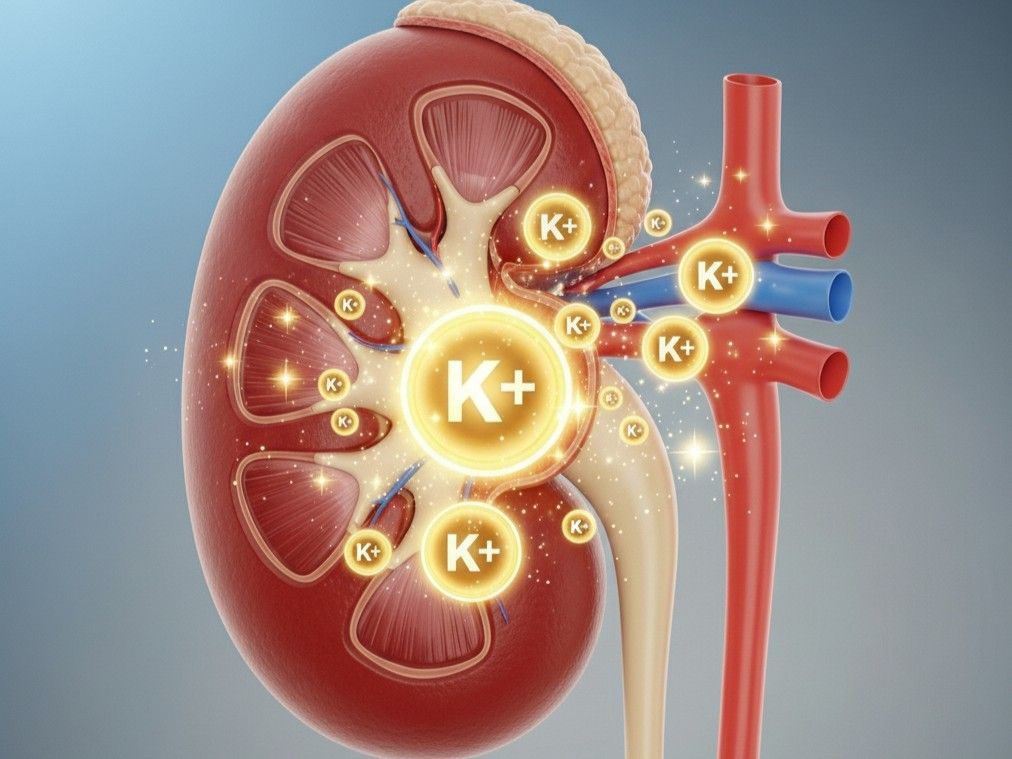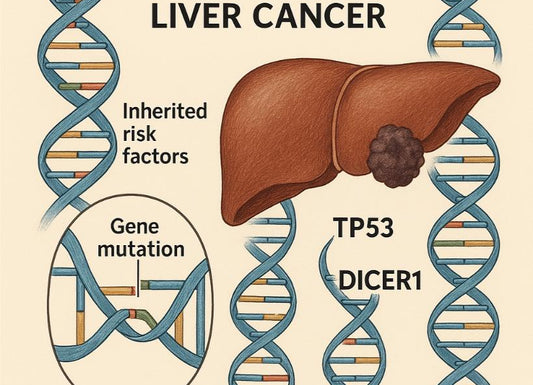How Much Potassium Per Day for Stage 3 Kidney Disease
 Written By
Blen Shumiye, MD
Written By
Blen Shumiye, MD

If you have been diagnosed with stage 3 chronic kidney disease (CKD), you may have already learned that diet plays a key role in protecting your kidney function. Among the most important nutrients to monitor is potassium, a mineral that helps regulate muscle contractions, nerve signals, and fluid balance. For people with healthy kidneys, the body naturally filters excess potassium. But in CKD, this process can be impaired, making potassium management essential.
In this article, we’ll explore how much potassium per day is recommended for stage 3 CKD, why potassium matters, and what practical steps you can take to balance your diet safely.
What is stage 3 CKD?
Stage 3 CKD is defined by an estimated glomerular filtration rate (eGFR) between 30 and 59 mL/min/1.73 m², representing a moderate decline in kidney function. It is further subdivided into:
-
Stage 3a: eGFR 45–59 mL/min/1.73 m²
-
Stage 3b: eGFR 30–44 mL/min/1.73 m²
At this stage, you may feel fine, but your kidneys are filtering much less efficiently. This affects your ability to keep electrolytes like potassium, sodium, and phosphorus in a safe range.
you can get a better What Is the Creatinine Level for Stage 3 Kidney Disease
Why is potassium balance so important?
Potassium is an essential mineral found in many foods, and the body requires about 4,700 mg daily for healthy adults to support vital functions. About 98% of potassium resides inside cells, with the kidneys responsible for excreting excess through urine.
Role of Potassium in the Body
-
Muscle and nerve function: Supports normal muscle contractions and nerve signaling.
-
Heart rhythm: Helps maintain a steady heartbeat.
-
Fluid balance: Works with sodium to regulate hydration.
Risks of Too Much Potassium (Hyperkalemia)
When kidneys cannot filter potassium efficiently, blood levels may rise—a condition called hyperkalemia. Symptoms may include:
-
Muscle weakness
-
Fatigue
-
Tingling or numbness
-
Irregular heart rhythms (potentially life-threatening)
Risks of Too Little Potassium (Hypokalemia)
On the other end, too little potassium can cause:
-
Muscle cramps
-
Constipation
-
Low blood pressure
-
Heart rhythm problems
This is why individualized guidance is critical: both high and low potassium levels can be harmful.
How much potassium should you eat daily with stage 3 CKD?
For most healthy adults, the daily recommendation is 3,500–4,700 mg of potassium. But with stage 3 CKD, that number often needs to change.
General guidelines
-
If your blood potassium level is normal (3.5–5.0 mmol/L): You may be able to keep your intake moderate, around 2,500–3,000 mg per day.
-
If your blood potassium is elevated (>5.0 mmol/L): Your healthcare provider may suggest lowering your intake to 2,000 mg per day or less until your levels stabilize.
-
If your potassium is too low (<3.5 mmol/L): You might actually need to increase your intake under medical supervision.
These ranges are not one-size-fits-all. Your personal target will depend on:
-
Your eGFR and lab results
-
Your medications (like ACE inhibitors, ARBs, or potassium-sparing diuretics)
-
Your overall diet and lifestyle
How often should you check your blood potassium?
Most people with stage 3 CKD should get their potassium checked every 3–6 months. But your doctor may recommend more frequent testing if:
-
Your medication changes
-
Your potassium levels were high or low on your last test
-
You’ve had symptoms like muscle cramps, weakness, or heart palpitations
Keeping a copy of your lab results makes it easier to spot trends and adjust your meals early.
Check out our guide on: complete guide to at-home kidney function tests
What Foods Are High in Potassium and What Foods Are Low in Potassium for a Healthy Diet?

When you have Stage 3 Chronic Kidney Disease (CKD), your kidneys are working at a reduced level. Because of this, they may not be able to filter out excess potassium effectively. Too much potassium in the blood (called hyperkalemia) can lead to serious heart problems.
That’s why it’s important to know which foods are high in potassium and which are low in potassium, so you can build a kidney-friendly diet.
High-Potassium Foods to Limit
Some foods are naturally rich in potassium. In stage 3 CKD, you may need to limit or portion these:
-
Fruits: Bananas, oranges, cantaloupe, honeydew, mangoes, prunes, raisins
-
Vegetables: Potatoes, tomatoes, spinach, avocados, pumpkin, winter squash
-
Beans and legumes: Kidney beans, lentils, black beans, chickpeas
-
Dairy: Milk, yogurt, ice cream
-
Other: Nuts, seeds, chocolate, molasses
-
Processed foods: Tomato soup or sauce, packaged foods with potassium-based preservatives, salt substitutes made with potassium chloride
Lower-Potassium Food Alternatives
You don’t need to avoid fruits and vegetables completely. Instead, choose lower-potassium options:
-
Fruits: Apples, berries, grapes, pineapple, peaches, watermelon
-
Vegetables: Green beans, carrots, cucumbers, lettuce, onions, peppers, zucchini
-
Grains: Rice, pasta, white bread
-
Protein: Eggs, chicken, turkey, fish (portion-controlled)
Tip: Always read labels. Potassium can be hidden in “low-sodium” processed foods. Look for words like “potassium chloride” or “KCl.”
How can you lower potassium in high-potassium foods?
If you want to keep some higher-potassium favorites in your meals, try these techniques:
-
Leach vegetables like potatoes
Leaching (boiling vegetables in water and draining) can reduce potassium content significantly: -
Peel and cut vegetables into small pieces.
-
Soak in warm water for at least 2 hours.
-
Rinse and boil in fresh water.
-
Drain and avoid using the cooking water.
-
Rinse canned foods
-
Use portion control
-
Instead of a whole banana, have a half.
-
Avoid potassium-based salt substitutes
-
Use fresh herbs, lemon, vinegar, or pepper for flavor instead.
What does a sample daily meal plan look like?
Breakfast Ideas
-
Oatmeal topped with blueberries and a sprinkle of cinnamon
-
Egg whites with bell peppers and onions
-
White toast with apple slices and a small portion of cream cheese
Lunch Ideas
-
Grilled chicken salad with lettuce, cucumbers, and olive oil dressing
-
Turkey sandwich on white bread with lettuce and cranberry sauce
-
Rice bowl with green beans and a small piece of fish
Dinner Ideas
-
Roasted chicken with steamed carrots and rice
-
Pasta with olive oil, garlic, and sautéed zucchini
-
Grilled salmon (small portion) with cucumber salad
Snacks
-
Apple slices with unsalted rice cakes
-
Grapes or strawberries
-
Popcorn (unsalted, air-popped)
Read more on: 7-day meal plan for kidney disease and diabetes.
How can you track and adjust your intake?
The easiest way to stay on track is to:
-
Read food labels: Watch for “potassium chloride” in salt substitutes or processed foods.
-
Stay hydrated: Unless restricted by your doctor, proper hydration supports kidney function.
-
Regular check-ups: Keep up with lab tests to track potassium and kidney function. You might also want to look for signs like protein in your urine or even foamy urine.
-
Avoid supplements: Do not take potassium supplements or salt substitutes unless prescribed.
What about medications and potassium binders?
Sometimes diet alone isn’t enough to keep your potassium level safe. Your doctor might prescribe a potassium binder such as:
-
Patiromer (Veltassa)
-
Sodium zirconium cyclosilicate (Lokelma)
These binders help your body remove extra potassium through your digestive system. They’re usually used when:
-
Your potassium stays high despite diet changes
-
You need to stay on medications like ACE inhibitors or ARBs for heart or kidney protection
Never start or stop these medications without medical advice.
When should you talk to your doctor or dietitian?

Reach out to your healthcare provider if you:
-
See your potassium rising above 5.0 mmol/L
-
Notice new symptoms like muscle weakness, numbness, or a fluttering heartbeat
-
Want to make significant changes to your diet
Regular check-ins with a renal dietitian can make a big difference in keeping your meals both safe and satisfying.
Final Thoughts
Potassium management in stage 3 CKD is a critical component of preserving kidney function and preventing complications such as hyperkalemia or hypokalemia. By closely monitoring lab values, adhering to individualized dietary guidelines, and maintaining regular follow-ups with your nephrologist and renal dietitian, you can effectively keep potassium levels within a safe range.
Early awareness and consistent, evidence-based adjustments to your nutrition and lifestyle help slow disease progression and support overall health — one measured step, one informed decision at a time.
And if you’re looking for tools to stay on track, Ribbon Checkup offers at-home health tests and guides you can trust.
Related resources
References
NIH. (2025, August 27). Healthy Eating for Adults with Chronic Kidney Disease. National Institute of Diabetes and Digestive and Kidney Diseases; NIDDK - National Institute of Diabetes and Digestive and Kidney Diseases. https://www.niddk.nih.gov/health-information/kidney-disease/chronic-kidney-disease-ckd/healthy-eating-adults-chronic-kidney-disease
Diet and Nutrition Goals for People with Stage 3 Chronic Kidney Disease | DaVita. (2025, May 9). DaVita. https://davita.com/diet-nutrition/articles/diet-and-nutrition-goals-for-people-with-stage-3-chronic-kidney-disease
Food For Thought, Managing Your Potassium Intake: How Much is Too Much? (2020, February 4). AAKP. https://aakp.org/food-for-thought-managing-your-potassium-intake-how-much-is-too-much
Picard, K., Barreto Silva, M. I., Mager, D., & Richard, C. (2020). Dietary Potassium Intake and Risk of Chronic Kidney Disease Progression in Predialysis Patients with Chronic Kidney Disease: A Systematic Review. Advances in Nutrition, 11(4), 1002–1015. https://doi.org/10.1093/advances/nmaa027
Potassium in Your CKD Diet. (2025, August 26). National Kidney Foundation. https://www.kidney.org/kidney-topics/potassium-your-ckd-diet?utm_source

Dr. Blen is a seasoned medical writer and General Practitioner with over five years of clinical experience. She blends deep medical expertise with a gift for clear, compassionate communication to create evidence-based content that informs and empowers. Her work spans clinical research, patient education, and health journalism, establishing her as a trusted voice in both professional and public health spheres.



